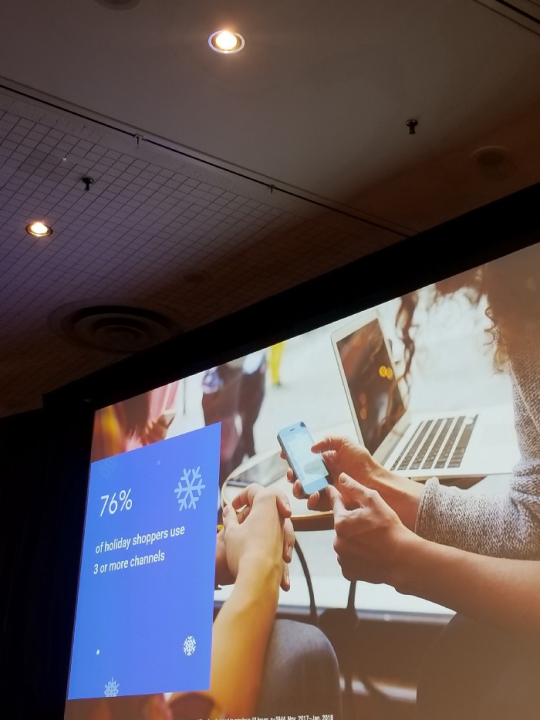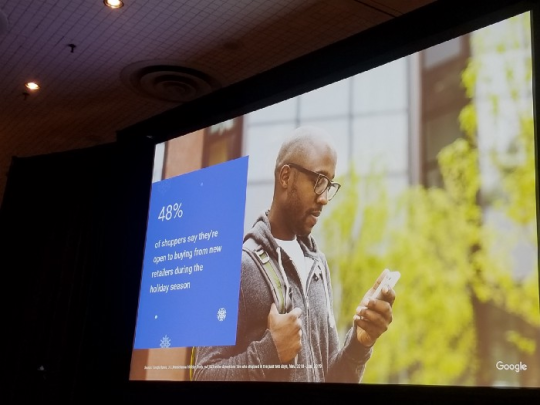Ways to Improve Marketing
Sales reps can only be as good as the product and message they represent. Before companies can hire Sales reps, they need a great product with messaging that conveys the benefits to customers. Sales reps need support from marketing in the cross functional organization of tomorrow. The messaging should be able to prevent customer objections. Unfortunately, this is where many Marketing departments fall short.

image via Salesforce.com
Many people that get hired in marketing, lack a sales background and have no idea on how to handle customer objections.
In addition, many people in Marketing lack the background and understanding of how people learn. Teachers and psychologists have this training. Understanding how people learn can make product messaging more effective because it can be presented in multiple formats. Many people in marketing lack practitioner experience and as a result marketing is not as effective as it could be. Practitioners are especially under represented in the Marketing function of many EdTech companies and this needs to change. Now I will make a case for hiring Sales Reps, Teachers and Industry practitioners in marketing.
Case for hiring ex Sales Reps
- Knows how to handle objections which can be applied to message
- Experience dealing with customers, knows customer pain points
- Sees how end-user uses the product
- Can increase sales using Sales expertise to make messaging customer centric
- Can assist with Sales and Marketing Alignment as companies need to work cross functionally
- Understands the issues Sales Reps face and has the credibility of being a Rep when collaborating with Sales Teams
Experienced obtaining , qualifying and converting leads to Sales ie Lead gen/demand gen
Hiring Industry practice experts
- They are the customers and understand the pain points better than any market research -should be in leadership roles
- Healthcare does this with Doctors, Dentists
- Tech does this with programmers and engineers.
Why not EdTech!
- Can increase Sales because they are the customer and understand the pain points because they have experienced them in the job
This is the best market research/ buyer persona there is!
Case For hiring ex Teachers
- understands how people learned
- skilled at tailoring content for understanding based on learning needs
- Today’s marketing is about educating customer and earning the right to market to them as they can educate customers
Why it is not Good enough to just place them in Sales
People in Sales are not involved in the creative process and cannot change their cards and company messaging.
They cannot address weaknesses in messaging and product.
The Marketer of Tomorrow
Has all of the above in their background or at least a Sales background at a minimum.
My Unique Value Proposition to Companies
I would be an excellent fit for a Marketing role due to the following:
- Former Outside Sales Rep which allows me to create messaging to preemptively stop most sales objections
- Can help with Sales Enablement/coaching/go on selected sales calls to improve the sales process
- Experienced Marketer
- Can build a better talent brand by building out your career site with employee stories
- Create and establish new markets along with helping to create new product offerings that complement existing ones
- Experienced online audience builder
- I have built up a large audience with 19, 000+ followers on WordPress
- 24,000+ followers on LinkedIn along with a following of 6000+ on my Twitter handle @DanGalante
Are you ready to increase Sales by improving Marketing? Your sales teams deserve better!
Change today!
How have you increased Sales by improving messaging? Comment and share below.
Additional Resources
Sales, Marketing & Social Media Strategies for Organic Growth
https://tmblr.co/ZTyq4v2VDX-Mx
https://tmblr.co/ZTyq4v2YTqK2h
About the Author
Dan is passionate about using Marketing to help businesses drive sales. HubSpot Certified in Inbound Marketing, Dan has worked on various marketing assignments including Start Ups, a Political Campaign and a Digital Marketing Conference.
Prior to teaching, Dan served customers as an Outside Sales and Marketing Rep in NYC. In this role, he taught and trained Dentists on the company’s products and services using a consultative selling approach combined with direct marketing. He also supported the company’s marketing efforts at industry trade shows.
He writes and publishes a business blog on the topics of Sales, Marketing and Social Media entitled Sales, Marketing & Social Media Today; which has grown to 24,000+ followers on LinkedIn and 19,000+ on WordPress.
Dan is seeking a full-time marketing role in Marketing. He is willing to create and build out the Marketing function of your organization if it does not exist. If your company is hiring for roles in these areas, contact him directly via a free LinkedIn Message or email him at Dan@DanGalante.com to set up interviews.











